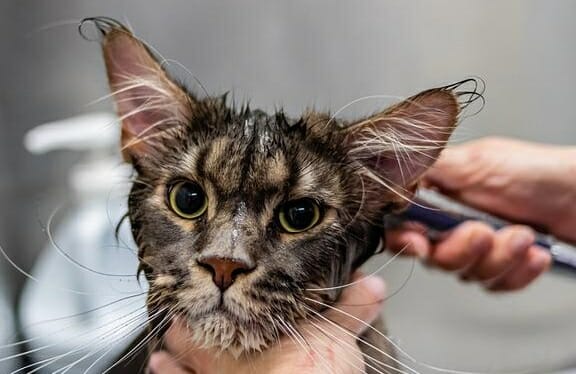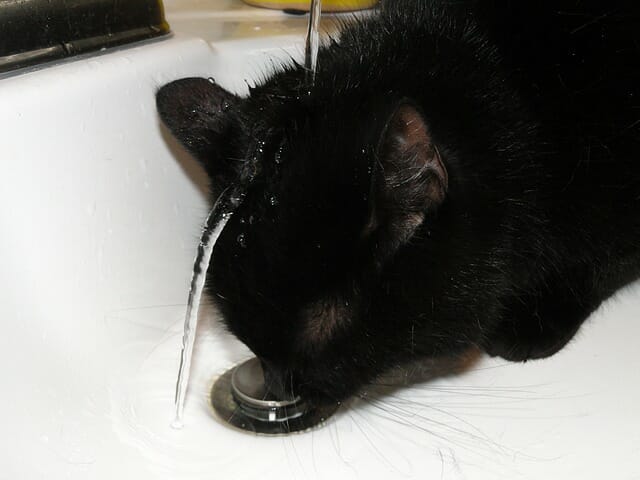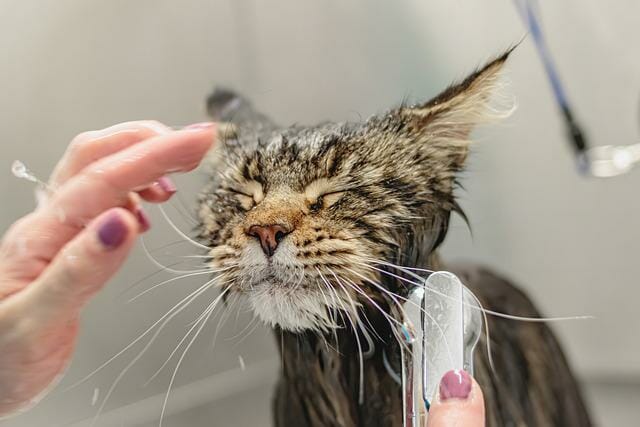Do Cats Need Baths: When to Bathe Your Pet Cat
No, cats do not need regular baths like dogs or humans do. Instead, cats are very good at grooming and spend much of their day cleaning their fur. Their saliva contains enzymes that act as a natural conditioner, and they use their rough tongues to remove loose fur and debris.
However, there are some situations where a cat may need a bath. For example, a bath may be necessary if a cat has gotten into something, particularly dirty or smelly, such as covered in mud or sprayed by a skunk. Additionally, if a cat has a medical condition that affects its ability to groom itself, such as obesity or arthritis, it may need help bathing.


When bathing a cat, it’s important to use a gentle shampoo specifically designed for cats, as human shampoos can be too harsh and irritate their skin. It’s also important to be patient and gentle, as cats may not enjoy the experience and may try to scratch or bite. While cats do not need regular baths, there are some circumstances where keeping them clean and healthy may be necessary.
Table of Contents
When to Give Your Cat a Bath
When They Get Into Something Dirty or Smelly
Bathing your cat when they get into something dirty or smelly is important because it helps to remove the dirt or odor-causing substance from their fur, preventing them from ingesting it while grooming themselves. Ingesting harmful substances can lead to health issues, including vomiting, diarrhea, and in severe cases, poisoning.
In addition to health concerns, leaving your cat dirty or smelly can also be unpleasant for you and your cat. For example, cats can have a strong odor when they get into something smelly, and the smell can linger in your home if your cat is not cleaned properly.
When bathing your cat after getting into something dirty or smelly, it’s important to use a cat-specific shampoo that is gentle on their skin and effectively removes the dirt or odor. It’s also important to use lukewarm water and avoid getting water in their ears or eyes, as this can be uncomfortable and lead to infection.
It’s important to note that cats are not always fond of getting baths, and it may take some patience and training to get them used to the process. For example, you can make the experience more comfortable for your cat by using a non-slip mat in the bathtub or sink and rewarding them with treats or praise after the bath.
When They Have a Medical Condition
Bathing your cat when they have a medical condition is important because some conditions can make it difficult or impossible for your cat to groom themselves properly, leading to matted fur, skin infections, and other health issues.


For example, cats with arthritis or mobility issues may have trouble reaching certain areas of their body, making it difficult to groom themselves thoroughly. For example, cats with obesity may also have difficulty grooming themselves due to their size and limited mobility.
If your cat has a medical condition that affects their ability to groom themselves, you may need to bathe them more frequently to keep their fur clean and prevent matting. You may also need to use a medicated shampoo if your cat has a skin condition or allergies that require treatment.
In addition to promoting good hygiene and preventing health issues, bathing your cat when they have a medical condition can also be a bonding experience between you and your cat. Many cats enjoy being groomed and pampered, and a bath can be a relaxing and enjoyable experience if done correctly.
Flea Infestation
Bathing your cat when they have a flea infestation is important in getting rid of the fleas and preventing further infestations. However, fleas are annoying and uncomfortable for your cat and can cause various health issues, including skin irritations, anemia, and tapeworms.
When bathing your cat, you can use flea shampoo to kill fleas and soothe your cat’s skin. These shampoos contain insecticides that are safe for cats, but it’s important to follow the instructions carefully and avoid getting the shampoo in your cat’s eyes or mouth.
Bathing your cat can also help remove any flea dirt or eggs in their fur. Flea dirt is the black, gritty material left behind by fleas, and it’s a good indication that your cat has fleas. You can remove flea dirt and prevent further infestations by washing your cat with flea shampoo.
It’s important to note that bathing your cat alone may not eliminate a flea infestation. You must also treat your home and cat’s environment to eliminate all fleas. This may include vacuuming your carpets and furniture, washing your cat’s bedding in hot water, and using flea sprays or foggers.
Working with your veterinarian to develop a flea prevention plan for your cat is also important. This may include regular flea preventatives, topical treatments, or oral medications to prevent future infestations.
Allergies


Bathing your cat when they have allergies can be an effective way to manage its symptoms and provide relief from itching and skin irritation. Various factors, including environmental allergens, food, and flea bites, can cause cat allergies.
When you bathe your cat with a mild, hypoallergenic shampoo, you can help remove allergens and irritants from their fur and skin, reducing itching and inflammation. Bathing can also help to soothe and moisturize your cat’s skin, which may be dry and irritated due to allergies.
In addition to bathing, there are other steps you can take to manage your cat’s allergies, including identifying and avoiding allergens. Please work with your veterinarian to identify the specific allergens affecting your cat and take steps to avoid them. This may include keeping your home clean and free of dust, mold, and other allergens and switching to a hypoallergenic cat litter.
